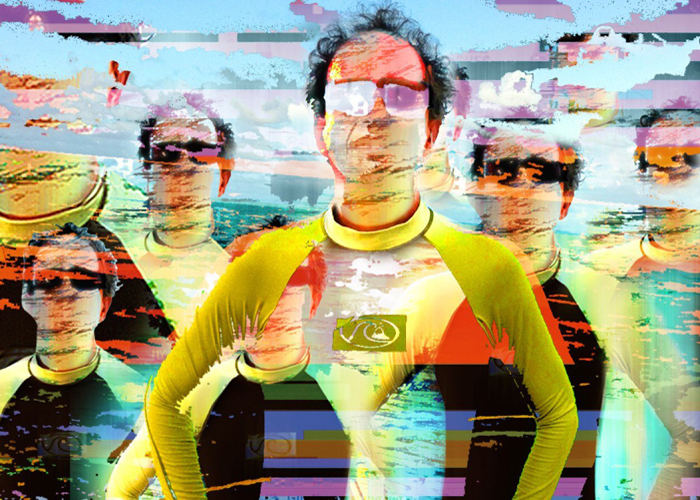


Mark Amerika has exhibited his art in many venues including the Whitney Biennial, the Walker Art Center, the Denver Art Museum, the Institute of Contemporary Arts in London, ZKM, the Biennale de Montréal, and the American Museum of the Moving Image. A Professor of Art and Art History at the University of Colorado at Boulder, Amerika is the Founding Director of the new Doctoral Program in Intermedia Art, Writing and Performance in the College of Media, Communication and Information.
©2017 Beyond Grammatron. All rights reserved.
About GRAMMATRON
"Inspired by Derrida's Of Grammatology, Mark Amerika experiments in GRAMMATRON with narrative form in a networked environment. Amerika retells the Jewish Golem myth by adapting it into the culture of programmable media and remixing several genres of text into the story's hybridized style, including metafiction, hypertext, cyberpunk, and conceptual works affiliated with the Art+Language group.
Narrated from various authorial perspectives, the story introduces readers to Abe Golam, a pioneering Net artist who creates Grammatron, a writing machine. Endowed not with the Word (as in the original myth) but with forbidden data—a specially coded Nanoscript—the creature becomes a digital being that "contains all of the combinatory potential of all the writings." The Grammatron is the personification of the Golem, which is also a personification of Amerika the artist. While the Golem and its environment have been depicted in any number of literary adaptations and works, in GRAMMATRON, Mark Amerika creates a seemingly infinite, recombinant (text-)space in the electrosphere."—ELMCIP Knowledge Base
About Filmtext 2.0
FILMTEXT 1.0 was produced from 2000-2001 and is now part of the University of Colorado Art Museum's collection. FILMTEXT 2.0 was produced in 2002. An iteration of it is currently held in a private collection but is intended later for the Denver Art Museum.
"With FILMTEXT 2.0 (2002), Mark Amerika presents a remix of philosophical inquiry on time and being, data perception and manipulation, networking culture, and writing, the final complement of his trilogy (GRAMMATRON, 1997 and PHON:E:ME, 1999). As a tourist in a visually changing landscape, the reader explores an interface that simulates a game-like environment. The user's task is to trigger cones of light that shimmer on the screen. Once activated, narrative paths unfold through animated texts, spoken-words, or videos. A central narrative construction in this work is the creation of a "Digital Thoughtographer" (DT), Amerika's personified concept character. The DT is a lens that looks like an image-capture device through which the viewer can access coded text fragments that appear as programmed scripts, images, and flickering video excerpts. Amerika uses the DT as an instrument that takes the perspective of an omniscent narrator who communicates defragmented statements to the reader/viewer: "There is only perception: the experience of seeing what is there in front of our eyes and capturing that thereness in the experiential act of perception." Mark Amerika's composition of texts is built on Raymond Federman's concepts of surfiction, critifiction, and playgiarism. The texts are digital remixes of theoretical views once expressed and assigned to known philosophers which the DT transmits without referencing sources directly. For example, the following statement resembles Barthes' questions about authorship: "Who are the ghosts in the literary machine?" Elsewhere he evokes Baudrillard, observing, "Not only can there be no original, the simulacrum has now lost its punch too," and "Aura is interface," "There is only perception." In the work at hand, the reader/viewer's perception blurs with facts and fiction in which Amerika's poetics of hacktivism and remixology are set into scene."—Electronic Literature Directory